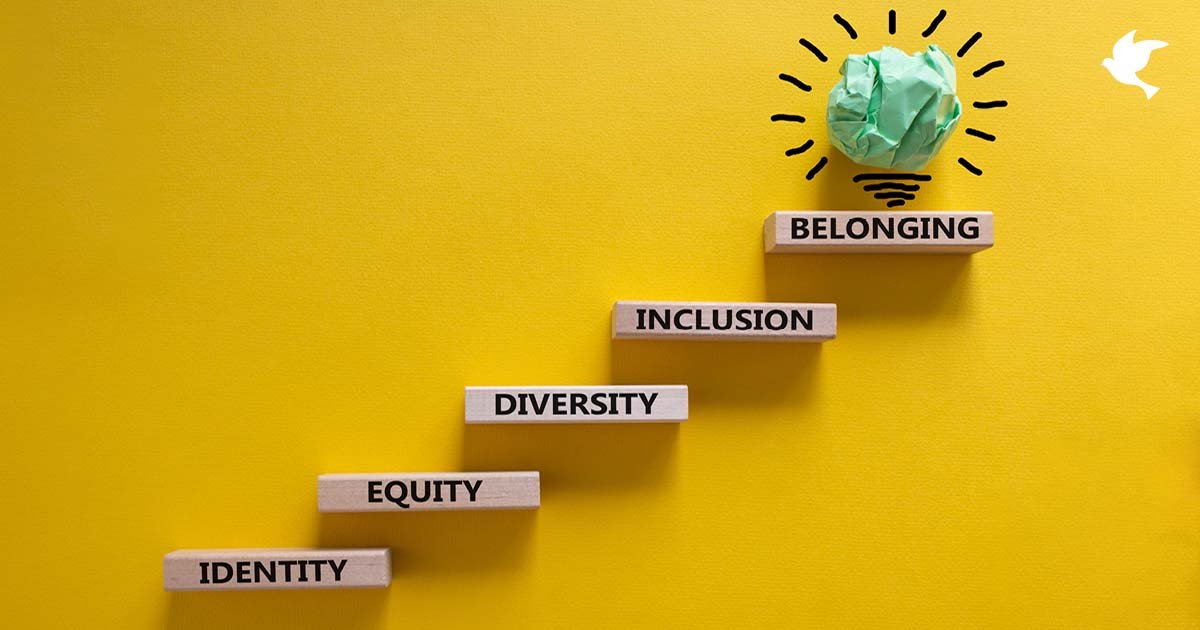How your Diversity and Inclusion practices can impact your brand engagement
Diversity and inclusion are two essential factors that impact employee engagement in the workplace. With a diverse and inclusive workplace, employees feel valued, respected, and empowered to contribute their best work.
Clearly, it is important for companies to create strategies that foster diversity and inclusion in the workplace in order to drive employee and brand engagement.
Diversity and Inclusion (D&I) - What does it mean?
Diversity refers to the variety of differences among people in the workplace, including age, race, gender, ethnicity, sexual orientation, religion, education, and experience.
Inclusion, on the other hand, is the practice of creating a workplace environment where everyone feels welcome, accepted, and valued regardless of their differences.
Inclusion encourages individuals to bring their authentic selves to work and enables them to collaborate, communicate and work together effectively.
For a business to be successful, diversity and inclusion must be combined. A healthy employee environment consists of a broad range of people who all feel safe and valued in the workplace.
How does Diversity and Inclusion impact brand engagement?
A diverse and inclusive workplace has a positive impact on employee engagement as it fosters a sense of belonging, trust and camaraderie amongst employees.
When individuals feel included, they are more likely to connect with their colleagues and work together effectively. This leads to better teamwork, communication, and problem-solving skills, which are essential for a successful and engaged workforce.
“Diversity and inclusion promote innovation and creativity.”
When employees come from different backgrounds and bring their unique perspectives and ideas to the table, it leads to a more innovative and creative work environment. This, in turn, helps the company to stay competitive and adaptable in an ever-changing business landscape, and contributes more broadly to the perception of their brand in the eyes of their customers as well as their employees.
With an increasingly diverse customer base, having a diverse workforce that can relate to and understand the needs of customers is essential. Companies that are committed to diversity and inclusion are more likely to provide better customer service and build stronger relationships with their clients.
With customers more aware of brands’ social responsibilities, companies who do not exhibit strong policies in this regard, are putting their brands at great risk.
CASE STUDY: Lorna Jane
Lorna Jane, an Australian activewear brand, faced backlash after advertising a job listing for a "receptionist/fit model" position on their website in April 2015.
The advertisement stated that the ideal candidate should have "model measurements" and be "confident in showing off Lorna Jane active wear."
The ad caused public outrage on social media and was widely criticised for promoting unrealistic body standards and perpetuating harmful societal norms, as well as promoting a lack of diversity and inclusion in the workplace. It even garnered criticism from industry bodies and, legal experts as being discriminatory.
The consumer and brand backlash caused the company to immediately remove the ad, although reasons given were that they had had a slew of applicants. Founder Lorna Jane Clarkson attempted to justify the company's stance and announced that they would be reviewing their recruitment processes to ensure that they align with their values and mission. Whether this has been done or not is not evident on the company’s careers page where there is no mention of diversity and inclusion, and imagery still reflects a lack of body diversity.
Again in 2022, Lorna Jane faced criticism after posting a video advertising their clothing featuring little diversity in the clip.
“Ultimately, your consumer brand and your employee brand are inextricably interlinked.”
Fallout from employee experiences can, and most often do, impact the consumer brand, and therefore the bottom line. With social media giving disgruntled employees a large platform and voice, companies are wise to ensure that their HR policies are in line with employees' expectations of fairness.
CASE STUDY: Everlane
Everlane is an international online clothing retailer that sells "radical transparency" to its customers by disclosing the costs of producing its products, including materials, labour, and transportation. Founded in 2010, the company grew rapidly, becoming a leader in the sustainable fashion movement, with a valuation of over $250 million by 2019.
However, in 2020, Everlane faced backlash from former employees who formed a group called the "Ex Wives Club," which alleged that the company had a toxic work culture that included racism, bullying, and retaliation against employees who spoke out about their experiences.
These allegations led to a public relations crisis for Everlane, with customers and investors alike questioning the company's commitment to fairness, diversity, sustainability and ethical business practices. In response, Everlane CEO Michael Preysman issued a public apology ,acknowledging that the company had not lived up to its values and promising to do better.
Everlane also launched an internal investigation which resulted in the firing of several executives, including their head of human resources. Everlane also hired a new head of diversity, equity, and inclusion to address the concerns raised.
The Ex Wives Club's allegations also highlight the power of employee activism and the need for companies to create safe and supportive work environments which embrace diversity and inclusion.
Everlane have since committed resources to build their diversity, equity and inclusion program and have a page on their website focusing on their diversity and inclusion strategy and ongoing initiatives, titled “Everlane For Everyone”
Create a culture of belonging that’s inclusive, respectful and equitable by:
Ensuring unfair barriers are removed for employees. Check that your HR policies and processes are fair and unbiased, starting from your recruitment advertising through to your screening processes, pre-employment assessments, career development opportunities, pay equity, parental leave policies etc.
Looking at how you’re advertising your company and products to customers. Are you being inclusive? Are you stereotyping? Ask for feedback and input from diverse audiences. Consider highlighting the unique stories of your customers or employees in your marketing campaigns.
Implementing training programs for all employees on respect in the workplace, inclusive leadership, unconscious bias.
Running feedback surveys with current employees and customers.
Understanding the different needs and expectations of employees and customers. Align your employer brand and your customer brand.
In conclusion, diversity and inclusion are essential factors that impact employee engagement and brand reputation. Creating an inclusive and diverse workplace enables employees to feel valued and empowered to contribute their best work, promoting better teamwork, communication, and problem-solving skills. A diverse workforce promotes innovation and creativity, leading to a competitive and adaptable business landscape. Most importantly, companies committed to diversity and inclusion are more likely to attract top talent, retain employees, provide better customer service and ensure a strong brand image.
Dovetail is a Brand Engagement company, uniquely positioned to bring together consumer and employee branding and strategy. Our experienced team of HR Consultants in Melbourne operate across Australia, working with our clients to implement progressive Diversity and Inclusion strategies and programs. Our Human Resources arm works closely with our consumer branding team to deliver fully integrated strategies. More >


